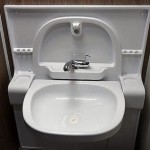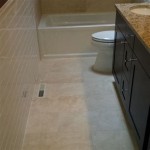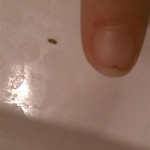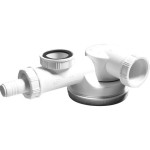How to Clean a Porcelain Bathroom Sink with Cabinet
The porcelain bathroom sink, often accompanied by a vanity cabinet beneath, is a common fixture in many homes. Its smooth, non-porous surface is generally durable and easy to maintain, contributing to its popularity. However, over time, soap scum, hard water stains, toothpaste residue, and other grime can accumulate, diminishing its shine and creating an unsightly appearance. Effective cleaning is essential, not only for aesthetic purposes but also for maintaining hygiene and preventing the build-up of stubborn stains that could potentially damage the porcelain finish. Furthermore, the cabinet beneath the sink, often overlooked, requires regular cleaning to prevent mildew growth and maintain its structural integrity. Combining proper cleaning techniques for both the sink and its associated cabinet ensures a fresh and sanitary bathroom environment. This article will provide a comprehensive guide on how to effectively clean a porcelain bathroom sink and its cabinet, covering various cleaning methods and preventative measures.
Before commencing any cleaning process, gather the necessary supplies. These typically include a soft sponge or microfiber cloth, a non-abrasive cleaner specifically formulated for porcelain, warm water, a spray bottle, a toothbrush for reaching tight corners, and rubber gloves to protect the skin. For tackling tougher stains, consider having baking soda, white vinegar, or a commercial descaler readily available. When cleaning the cabinet, additional supplies like a wood cleaner or disinfectant wipes, depending on the cabinet's material, may be required. Proper preparation ensures a smooth and efficient cleaning process.
Essential Cleaning Techniques for Porcelain Sinks
The cornerstone of porcelain sink cleaning lies in regular maintenance. A daily wipe-down with a damp cloth or sponge after each use significantly minimizes the build-up of grime. This simple habit prevents soap scum and water spots from becoming deeply ingrained in the surface, substantially reducing the need for more intensive cleaning sessions. Furthermore, ensuring proper ventilation in the bathroom, particularly after showering, helps reduce moisture levels, which can contribute to mildew growth and water stains. Effective preventative measures greatly simplify the overall cleaning process.
For routine cleaning, a mild dish soap diluted in warm water is generally sufficient. Apply the solution to the sink surface using a soft sponge or cloth, gently scrubbing away any visible dirt or residue. Pay particular attention to areas around the drain, faucet, and edges where grime tends to accumulate. Rinse thoroughly with warm water, ensuring all traces of soap are removed. Subsequently, dry the sink with a clean, dry cloth to prevent water spots and restore its shine. Avoid using abrasive scrub pads or cleaners, as these can scratch the porcelain surface, leading to permanent damage and a dull appearance.
Stubborn stains, such as hard water deposits or rust, may require more specialized cleaning methods. Baking soda, a mild abrasive, can be used to gently scrub away these stains. Create a paste by mixing baking soda with a small amount of water, apply it to the affected area, and let it sit for a few minutes before scrubbing gently with a soft cloth or sponge. White vinegar is another effective cleaning agent for dissolving mineral deposits. Fill the sink with equal parts white vinegar and water, let it soak for an hour or two, and then scrub away the loosened stains. For particularly persistent stains, a commercial descaler specifically designed for porcelain can be used, following the manufacturer's instructions carefully.
Addressing stains around the drain and faucet often requires a targeted approach. A toothbrush or small scrub brush can be used to reach these tight corners and crevices. Dip the toothbrush in a cleaning solution of your choice, such as baking soda paste or diluted vinegar, and scrub gently to remove any accumulated grime. Rinse thoroughly with water after cleaning. Regular cleaning of these areas prevents the build-up of mold and mildew and ensures a hygienic sink environment.
Cleaning and Maintaining the Sink Cabinet
The cleaning of the bathroom sink cabinet is as important as cleaning the sink itself. The cabinet often bears the brunt of spills, splashes, and moisture, making it susceptible to water damage, mold growth, and general grime. A consistent cleaning regimen can help keep the cabinet in good condition and prolong its lifespan. The frequency of cleaning depends on usage and the likelihood of spills, but a general cleaning once a month is usually sufficient.
The cleaning process begins with emptying the cabinet. Remove all items stored within, such as cleaning supplies, toiletries, and towels. This allows unobstructed access to all surfaces and prevents accidental damage to stored items. Inspect the interior of the cabinet for any signs of water damage, mold growth, or structural issues. Early detection of such problems allows for prompt remediation and prevents further damage.
The method used to clean the cabinet's exterior depends on its material. Most bathroom cabinets are made of wood, laminate, or painted surfaces. For wood cabinets, a wood cleaner or mild soap solution diluted in water is generally sufficient. Apply the cleaner to a soft cloth and wipe down the exterior surfaces, paying attention to areas around the handles and edges where grime tends to accumulate. For laminate cabinets, a damp cloth with a mild detergent can be used. Painted cabinets can be cleaned with a damp cloth and a gentle all-purpose cleaner. Always avoid using abrasive cleaners on any cabinet material, as they can scratch or damage the finish.
The interior of the cabinet can be cleaned with a damp cloth or disinfectant wipe. Pay particular attention to areas that have been exposed to spills or moisture. For mold growth, a solution of bleach and water (1 part bleach to 10 parts water) can be used, but always test the solution on an inconspicuous area first to ensure it does not damage the finish. After cleaning, ensure the cabinet is thoroughly dried to prevent water damage and mold growth. Consider using a dehumidifier in the bathroom to reduce moisture levels, especially if the bathroom is prone to humidity.
Regular maintenance involves taking steps to prevent damage and maintain the cabinet's appearance. Use coasters or placemats under items that may leak or spill. Install shelf liners to protect the cabinet surface from scratches and stains. Inspect the plumbing connections under the sink regularly for leaks, and address any issues promptly. Keep the cabinet ventilated by opening the doors periodically to allow air circulation. By following these preventative measures, the cabinet can be kept in good condition for years to come.
Addressing Common Porcelain Sink and Cabinet Issues
Despite regular cleaning, certain issues may persist with both the porcelain sink and the cabinet beneath. Understanding how to address these common problems is crucial for maintaining the overall appearance and functionality of the bathroom.
One common issue is clogged drains. Hair, soap scum, and other debris can accumulate in the drainpipe over time, causing slow drainage or complete blockage. Regular flushing of the drain with hot water can help prevent clogging. If the drain is already clogged, a plunger can be used to dislodge the blockage. If the plunger is ineffective, a drain snake or chemical drain cleaner may be necessary. However, exercise caution when using chemical drain cleaners, as they can damage the porcelain finish and the drainpipe. It is recommended to follow the manufacturer's instructions carefully and wear appropriate protective gear.
Another common problem is water damage to the cabinet. Leaks from the faucet or drainpipe can cause water to seep into the cabinet, leading to swelling, warping, and mold growth. Regularly checking the plumbing connections for leaks and addressing any issues promptly is essential. If water damage has already occurred, the affected area should be dried thoroughly and treated with a mold and mildew remover. Depending on the extent of the damage, it may be necessary to replace the damaged portion of the cabinet or the entire cabinet.
Hard water stains are another persistent issue that can affect both the porcelain sink and the cabinet. Hard water contains minerals that can leave unsightly deposits on surfaces. Regular cleaning with vinegar or a commercial descaler can help remove these stains. Installing a water softener can also help prevent hard water stains from forming in the first place. For hard water stains on the cabinet, a damp cloth with a mild vinegar solution can be used. Always test the solution on an inconspicuous area first to ensure it does not damage the finish.
Finally, scratches on the porcelain sink surface can be a frustrating problem. While it is generally recommended to avoid using abrasive cleaners to prevent scratches, minor scratches can sometimes occur. A porcelain repair kit can be used to fill in and smooth out scratches. Follow the manufacturer's instructions carefully when using a repair kit. For deeper scratches, it may be necessary to consult a professional to have the sink refinished. Prevention is always the best approach, so avoid using abrasive scrub pads or cleaners and be careful when placing objects on the sink surface.

How To Get A Clean Porcelain Sink And Remove Rust Stains Too Mom 4 Real

How To Get A Clean Porcelain Sink And Remove Rust Stains Too Mom 4 Real

How To Care For Porcelain Fixtures

How To Clean A Porcelain Sink In The Kitchen Or Bathroom Bob Vila

How To Clean A Stained Porcelain Sink Quick And Safe Fixes Anita S Housekeeping

How To Clean Porcelain Sink What Cleaned This Old The Best

How To Care For Bathroom Ceramic Basins Basin

No More Hard Water Stains How To Easily Clean Your Porcelain Sink In Minutes Vooki

How To Clean A Porcelain Sink Bunnings Work Community

The Easiest And Best Way To Clean A Porcelain Sink
Related Posts







